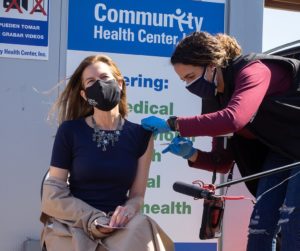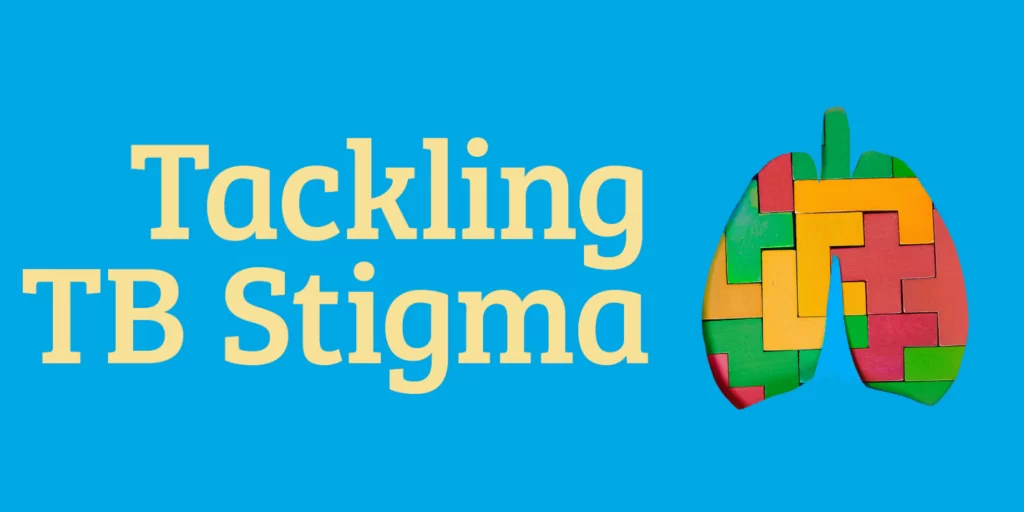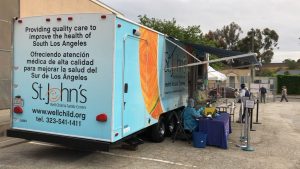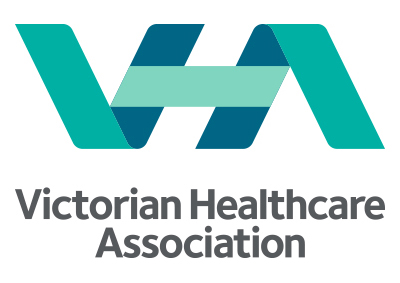IFCHC e-Newsletter 2022.02
News and stories from IFCHC member Community Health Centres and CHC associations around the world
Evidence-based chronic pain service at Merri Health improving client outcomes and reducing hospital burden
 Chronic and persisting pain affects 1 in 5 Australians aged 45 and over, with an estimated 3.2 million adults currently living with debilitating pain. Access to timely support has been limited, with wait times for chronic pain services in Australia averaging 120 days. Alongside the daily challenges of dealing with chronic pain comes an increased risk of depression, anxiety, poor self-esteem and social isolation.
Chronic and persisting pain affects 1 in 5 Australians aged 45 and over, with an estimated 3.2 million adults currently living with debilitating pain. Access to timely support has been limited, with wait times for chronic pain services in Australia averaging 120 days. Alongside the daily challenges of dealing with chronic pain comes an increased risk of depression, anxiety, poor self-esteem and social isolation.
To combat this growing health gap, Merri Health, in north Melbourne, Australia has established a free Chronic Pain Service (CPS) to provide evidence-based, multidisciplinary care to help people self-manage persistent pain and recover.
The CPS aims to improve physical and mental wellbeing and develop links with broader service systems to support an integrated approach.
By utilising existing partnerships with key hospitals such as the Royal Melbourne Hospital, Merri Health identified opportunities to improve patient and provider experiences, increasing community access to reduce waitlist pressure and increasing knowledge transfer between clinicians for more integrated care.
Results from the first 14 months confirm the CPS’ impact on reducing the burden of chronic pain for patients and hospitals still grappling with the demands of the COVID-19 pandemic. Exceptional community uptake has seen over 160 clients referred to the service since inception.
Data for January to December 2021 from the Electronic Persistent Pain Outcomes Collaboration (ePPOC), an Australasian initiative to improve outcomes for people with chronic pain shows:
- 91.7% of patients reported making at least some overall improvement
- 75% reported an improvement in their physical abilities
- 83% reported clinically significant improvement in depression
- 78% of clients made a clinically significant improvement in how pain interferes with their daily life
- 75% of individuals made a clinically significant improvement in pain catastrophising
- 67% of clients had made a 50% reduction in their use of opioid medication by discharge
- median wait times were 28 days, with 97.2% of wait times under 3 months
The CPS was designed especially for clients where high-intensity tertiary outpatient clinics are not appropriate. It includes individual and group therapy with allied health and medical staff, providing a variety of evidence-based approaches tailored to each person to:
- Learn more about their pain
- Learn pain management skills and strategies and apply them actively to their life
- Improve their confidence in living their best life, despite the pain
The service uses a variety of treatment models, including pain medication and medical management, cognitive functional therapy, a range of psychological approaches, lifestyle coaching and exercise.
Initially funded for two years, the success of the CPS has seen the program extended for a further two years to June 2024.
Antoinette Mertins, Merri Health General Manager Aged and Primary Care said, “Building strong links with the broader system has been key to the service’s success. Through partnerships particularly with GPs and tertiary services, we’ve supported integrated care that is responsive to the needs of people with chronic pain.”
This service is supported by North Western Melbourne Primary Health Network. More information at Merri Health | Support to help you manage persistent pain.
Reflections on the First Year of NACHC’s Center for Community Health Innovation
 In 2021, the U.S. National Association of Community Health Centers (NACHC), based in the United States, was awarded a generous grant from the RCHN Community Health Foundation to establish the Center for Community Health Innovation (CCHI). The Center helps prepare Community Health Centers, state and regional CHC associations and Health Center Controlled Networks for future success. CCHI’s focus is on the workforce of the future, practice innovation models and collaborative arrangements. This work builds on the U.S. CHC movement’s unique 50-plus year history, and commitment to equity and access and is aligned with NACHC’s six pillars.
In 2021, the U.S. National Association of Community Health Centers (NACHC), based in the United States, was awarded a generous grant from the RCHN Community Health Foundation to establish the Center for Community Health Innovation (CCHI). The Center helps prepare Community Health Centers, state and regional CHC associations and Health Center Controlled Networks for future success. CCHI’s focus is on the workforce of the future, practice innovation models and collaborative arrangements. This work builds on the U.S. CHC movement’s unique 50-plus year history, and commitment to equity and access and is aligned with NACHC’s six pillars.
CCHI’s mission is to serve as a catalyst for innovation at America’s Community Health Centers and to help advance future-focused approaches that increase access to affordable, equitable, quality health care for all. The Center’s Innovation Values are:
- LEARN from history and from others
- BE CREATIVE to foster intentional, inclusive innovation
- COLLABORATE widely and build relationships
- ENGAGE those who are most impacted
- CONVENE to inspire, and be inspired by, others
- ADAPT as there is often a no “one size fits all” solution
- MEASURE progress by evaluating data, insights and stories
- EDUCATE and disseminate for broad impact
Project highlights from year one of the CCHI include:
- Formed an Innovation Advisory Council, made up of CHC, state CHC association and Health Center Controlled Network leaders, to help inform and guide the Center’s work.
- Launched the “Workforce of the Future Challenge” as a call for best and promising practices focused on engaging youth in future careers as Community Health Center professionals.
- Partnered with Direct Relief on the Power for Health Initiative to help CHCs in disaster-prone areas become more resilient and secure energy solutions such as solar power and backup batteries.
- Awarded over $60,000 in grants for care delivery innovations with mobile units thanks to support from the Leon Lowenstein Foundation.
- Co-hosted a workshop with the Center for Care Innovations on Human-Centered Design for NACHC’s Community Health Institute conference in August 2022.
NACHC’s long-standing partnership with their federal government partners at the U.S. Department of Health and Human Services extends to work at CCHI, including regular engagement with HRSA’s Innovation office, the Bureau of Primary Care’s Center for Health Center Innovation, and the Center for Medicare and Medicaid Innovation.
So, what’s next? This fall, NACHC’s CCHI has planned the launch of a higher education Minority-Serving Institutions coalition, with support from the Johnson & Johnson Foundation. The CCHI is also building an innovation dictionary (coming soon) – the “Innovictionary” – to define innovation tools and concepts with a health center lens and curated resources. And, the CCHI looks forward to its inaugural Innovation Summit, which is planned for early 2023 to convene Cummunity Health Center leaders, innovation experts, and people with lived experience to discuss emerging challenges and opportunities. CCHI welcomes ideas and potential partners.
Feel free to email NACHC at innovation@nachc.org. You can also visit the Center for Community Health Innovation webpage, sign up for their innovation listserv, or follow our hashtag #CHCsInnovate on social media.

Not yet a member of IFCHC? We encourage your Community Health Centre or CHC association to join and become part of the global CHC movement.

New CHC-focused podcasts from North America
In recent months both the U.S. National Association of Community Health Centers (NACHC) and Canadian Association of Community Health Centres (CACHC) have produced new episodes of their national podcasts. See the most recent episode of CACHC’s “Community Matters” and NACHC’s “Health Centers on the Frontlines”, along with additional recent episodes linked below. When viewing on YouTube, remember to hit the “Like” button and subscribe to these podcasts to get notified of new episodes.
The podcasts can also be accessed on Spotify, Apple Podcasts, and other platforms. In addition, CACHC’s “Community Matters” is now a part of the exciting podcasting 2.0 world. You can check the podcast out on Fountain FM.
Other Recent Episodes
cohealth: Laneway Light – Beyond the Stigma
To mark International Overdose Awareness Day, Australian CHC cohealth partnered to develop a laneway art and memorial installation, with images and artworks created by people who have a lived experience of drug dependence. Learn more.
A closer look at the "community hub" approach
IFCHC member Langs CHC in Cambridge, Ontario, Canada brings added value and impact to members of the community by co-locating and co-operating with a variety of local partners via a community hub approach. Learn more.
Every CHC has a story, connected to community
Get to know the history and story behind one of our member Community Health Centres, San Ysidro Health, located in San Diego County, California, USA. The CHC provides a wide range of services from more than 50 program sites near the USA/Mexico border.
New CHC podcast from Australia
In recent month, IFCHC’s member CHC from Melbourne, Australia — North Richmond Community Health — launched a new podcast hosted at an in-house studio within the centre. Vist the podcast page to access all episodes to date.
“Low-barrier” is not good enough anymore:
How The Alex CHC is working toward zero-barrier care
The health care system across Canada (and in most other countries) has been designed to meet the needs of those providing the services. While this may work for some Canadians, it comes up short for marginalized communities who encounter complex barriers accessing health care.
Barriers may include lack of transportation, financial means, lack of identification or permanent address, poor past experiences with the health care system and many others. Take a moment and think about your last experience at your doctor’s office or emergency room. Was it trauma-informed?

The consequences of inaccessible health care are considerable, both on an individual and systemic level. People may delay getting medical help, which often leads to worsened health outcomes. The need for emergency services may increase, which is more expensive to the system than prevention, early detection and treatment.
At The Alex Community Health Centre, in Calgary, Alberta, Canada, we believe that all community members, regardless of their situation, deserve accessible health care. That said, providing care that truly has zero barriers while operating within the healthcare system may always be an aspirational goal. It is imperative that we regularly review our processes to identify barriers our programs may be posing for community members.
Whether that’s ensuring our spaces are dignified and comfortable, training all our staff in trauma-informed care, or physicially bringing our services to those who need it, we strive to ensure that coming to The Alex is the first step towards wellness. At The Alex CHC, we do this by providing:
- A peer-led Street Team that provides substance use and mental health support to those experiencing homelessness across the city.
- A fleet of four mobile health buses that act as clinics-on-wheels visiting identified high-needs locations and schools around Calgary to provide physical health, mental health, and dental care.
- Walk-in hours and phone intakes.
- Temporary housing for people experiencing homelessness during the pandemic.
- Home visits by a team of case managers and specialists.
- A Rapid Access Addiction Medicine clinic which ensures that when a person makes the decision to address their addiction, immediate, unbiased, and stigma-free support is available and the “window of opportunity” is not missed.
- A large Housing First program that does not require sobriety or other conditions to being housed.
As a not-for-profit with about 400 staff serving over 10,000 people each year, we have the scale but also the flexibility to offer health care in novel ways. But we are only one organization, in one city in Canada. System-wide changes are overdue, which is why we advocate with the Canadian Association of Community Health Centres (CACHC) and every level of government, as well as globally through the International Federation of Community Health Centres (IFCHC), for this model to be more widely adopted. When we make health care more accessible, more Canadians and more people around the world can access care that truly meets their needs.
Adam’s Story
Adam is a 47-year-old who has experienced chronic homelessness for 20 years. He walks about 5 kilometers a day carrying his belongings seeking shelter and warmth in Calgary’s downtown core.
He started noticing swelling in his legs and fatigue that was out of the ordinary. As time went by, he started noticing his urine was darker than normal, and the whites of his eyes had a yellow tint to them. That’s when Adam knew something wasn’t right.
He’s had bad experiences in medical settings though – most recently when he visited an emergency room for frost-bite. Adam lives on the street and when it’s extremely cold outside he drinks alcohol to feel warm. That day he drank a bottle to numb the cold but started noticing discoloration in his hands. He walked to the nearest hospital while Calgary was experiencing a 40 below cold snap. Noticing he was intoxicated, the staff were short and impatient with Adam. He felt very judged, and the clinical setting reminded him of the trauma he experienced while being hospitalized for mental health problems in the 1980s. He promised himself he would never return.
Now, years later, Adam knows he needs to see a doctor about his symptoms but doesn’t want to relive that experience. Because he’s experiencing homelessness, Adam is focused on daily survival, working hard to find food and shelter. He just doesn’t have the time or energy to think about worsening symptoms. He hopes they’ll go away on their own.
Adam was suffering from a Hepatitis C infection, which was slowly causing chronic liver disease. Treatment of Hepatitis C is very effective when caught early. If Adam had access to compassionate, non-judgmental care, the rest of his life would’ve been different. He could’ve avoided cirrhosis, kidney damage, and heart problems, and he may not have been ambulanced to an emergency room with liver failure years later.
What's in a name? Sometimes, a lot.
There’s a saying among many in the Community Health Centre movement: “Once you’ve seen one Community Health Center, you’ve seen one Community Health Center”. This speaks to the fact that while CHCs share many common attributes and a general “model”, each CHC is a reflection of the needs, make up, and priorities of the local community or communities that it serves. This also means that CHCs adapt and evolve over time with and for the community, including structural and other organizational changes when the time is right.
Several of IFCHC’s member CHCs have recently embarked on such changes, and we are pleased to highlight two. The first is our member CHC in Los Angeles, California, USA — formerly known as St. John’s Well Child and Family Center — now officially St. John’s Community Health. In the video below, learn more from the organization’s leaders and community leaders about what this change signifies.
The second highlight comes from Australia, where our member “Star Health” in Melbourne has embarked on a voluntary amalgamation with two other community health agencies to become Better Health Network. Via the link, learn more about the rationale and vision for this integration and meet the incoming CEO and Chairperson of BHN. Damian Ferrie and Janice Munt.

New CHC in development - Lagos State, Nigeria
One of the most fascinating aspects of the Community Health Centre movement around the world is the diversity of ways in which CHCs are established by, for and with community, grounded in local realities. A new project underway in Epe, Lagos State, Nigeria called “Bitcoin Village Epe” puts this in clear relief. The vision for the planned village includes a new Community Health Centre to serve local residents as part of a multi-facted education, health and economic development initiative.
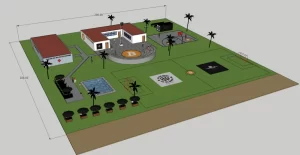
Initial rendering of Bitcoin Village core community infrastructure
In addition to major gaps in access to services (health, education and more) Nigeria faces significant challenges resulting from the global monetary system including persistent inflation and debasement of its national currency, the Naira. Due to these challenges and the socio-economic impact, Nigeria — with a population of 217 million — now leads the world in adoption of Bitcoin as an alternative monetary asset with 35% of the entire population now using Bitcoin as money for day-to-day exchange and savings. This allows tens of millions of Nigerians, including millions of individuals who are unbanked, to access merchant services, engage in peer-to-peer exchange, and to protect their savings from the impact of hyper-inflation.
Using Bitcoin, a significant number of human rights and community development initiatives have taken shape in recent years throughout the country, built from the community and grassroots up. One of the more prominent examples is the Nigerian Feminist Coalition, which has placed Bitcoin at the centre of its ongoing campaign for women’s rights as human rights throughout the country.
Bitcoin Village in Epe will add to this growing ecosystem throughout Nigeria, and will be loosely modelled after similar community development initiatives being advanced in other parts of the world including Bitcoin Beach (El Zonte, El Salvador), Bitcoin Lake (Panajachel, Guatemala), and Bitcoin Ekasi (Mossel Bay, South Africa). The grassroots, community-based effort in Epe draws from lessons captured over the past five years with these projects, most notably in El Salvador, documented in the Bitcoin Beach White Paper.
Bitcoin Village Epe will be powered through a new solar energy installation, which will also be used to power Bitcoin hashing/mining onsite. Coupled with global crowdfunding efforts, proceeds from solar-based Bitcoin hashing/mining in the village will be recycled into development of community infrastructure, including: a sustainable water well, street lights and residential power; a 2,500 square foot school including a STEM lab; a Community Health Centre; and recreational facilities including amphitheatre, basketball court, soccer field, and swimming pool.
IFCHC is currently in discussion with project leads to provide guidance and to foster connections related to the village’s Community Health Centre. The CHC model is a perfect fit for this community, connected to a larger vision of inter-connected education, healthcare, social development, and community economic empowerment.
The entire approach will be based in a local Bitcoin circular economy, linked through the Bitcoin Lightning Network — the world’s fastest and most accessible payments and financial settlement network — to enable transactions and exchange between local residents, all village services, and local shops in the region. Project leads will be hosting global crowdfunding through a partnership between Botmecash, Satoshi’s Journal and the not-for-profit Fix the Money, Fix the World Foundation, where global donations can be made.


